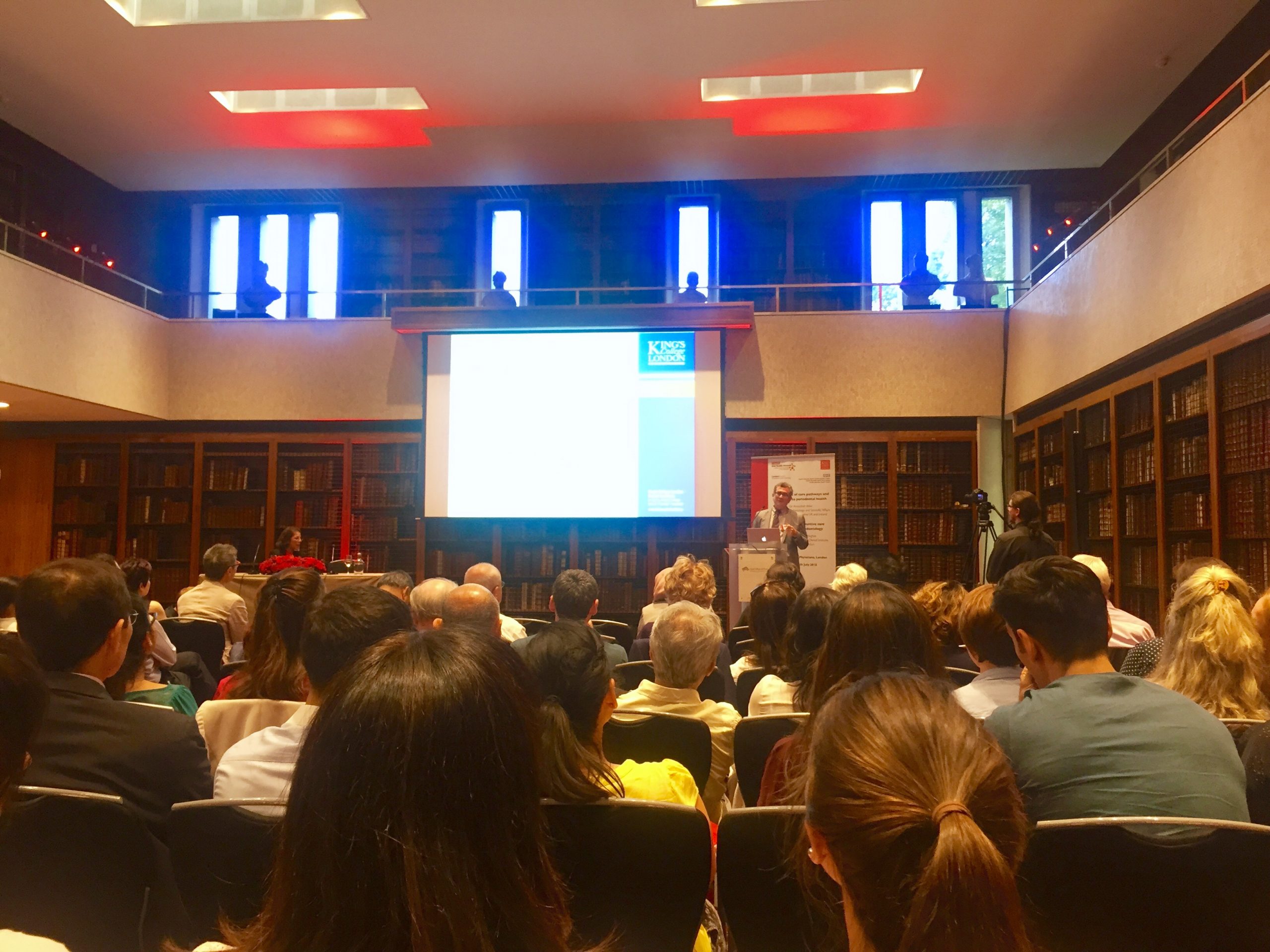Home/Articles / Periodontology / Reena’s Notes: 16 Key Points on Personalised Preventive Care Planning in Periodontology with Professor Francis Hughes
July 8, 2015

- Plaque is the primary aetiological factor for periodontitis but it doesn’t account for the wide range of variability in individual disease susceptibility.
- On a population level, we would assume that an improvement in plaque control should equally improve the prevalence of periodontitis. However, although there are population trends for improved plaque control, adequate plaque control is remarkably uncommon and we are quite far away from population-based measures improving the prevalence of periodontitis.
- Severe periodontitis has increased by around 50% in the last 10 years or so and improving plaque control doesn’t seem to have the same effect for this category. Aetiological factors in severe periodontitis include: oral hygiene and smoking (behavioural), type of microflora (largely predetermined), systemic disease (acquired), genetics (inherited) and psychosocial factors (inherited/acquired).
- Targeted preventive strategies at individual patient level are likely to be the best approach as the one size fits all approach to prevention is unlikely to be successful. Being able to identify actual risk can allow for more accurate patient targeted prevention strategies.
- Personalised prevention should take into account motivation, plaque control/oral hygiene instruction, compliance and risk factor management.
- Motivation is the desire to undertake behavioural change. Motivation is required but it may not be sufficient to achieve good oral hygiene. Motivation is determined by the perceived benefit/threats of change, self efficacy and cues to action. Find out what the patients perceived threats are as periodontitis is not a silent condition – these may include tooth loss, discomfort, poor aesthetics, poor function and halitosis. We also need to be clear about the benefits of prevention/treatment – this may include keeping teeth for longer and comfort (rather than pocket depth reduction). Reinforce benefits regularly. Use plaque and bleeding scores as objective measures of improvement to demonstrate self efficacy.
- Plaque control is difficult for many patients and we need to be demonstrating instructions intraorally. Telling/showing on models is unlikely to be very helpful. Provide instructions in bite size amounts and repeat at each visit.
- Compliance is based on motivation, oral hygiene instruction and carrying out the agreed plan (homecare, recall interval etc.). Compliance is the strongest determinant of treatment outcome in periodontal therapy.
- EFP Workshop on Prevention: Professional cleaning is of little benefit in the absence of oral hygiene instruction and behavioural change in oral hygiene practices can be based on psychological frameworks such as GPS – goal setting, planning and self-monitoring.
- Barriers to effective prevention may include: dexterity, social circumstances/peer pressure, addiction (smoking), failure of expected outcomes and psychological factors. For example, stress and negative life events are associated with poorer plaque control, more smoking and higher levels of periodontitis. However, evidence suggests that coping mechanisms, emotional intelligence and depression are more important than stress per se in determining risk of periodontitis and treatment outcomes.
- Smoking – possibly the most useful intervention is periodontal therapy (more important than oral hygiene). 50% of smokers don’t respond to treatment and we can’t brush away the effects of smoking. As health professionals we should be providing regular smoking cessation using the 3 As (ask, advise and assist). Patients expect us to ask them about their smoking status and even a brief intervention can improve cessation rates.
- Systemic risk factors may include – diabetes, pregnancy, calcium channel blockers and other drugs. These all make prevention less effective.
- Diabetes – many of your patients will have diabetes and some will be undiagnosed. Increases the risk to periodontitis and poorly controlled diabetics have lower success rates to treatment. Periodontal therapy may improve diabetic control.
- Calcium channel blockers (usually for hypertension) are widely prescribed and result in drug related gingival overgrowth. Withdrawal can result in rapid improvement so if the patient is on a simple drug regime it may be worth contacting the GP to discuss alternative drugs.
- Draft planning sheet for personalised prevention:
– Motivation – Patient concerns, patient benefits, reinforce efficacy
– Planning behaviour change – GPS
– OHI – Toothbrushing, interdental cleaning
– Smoking – 3As, brief in surgery advice, referral to clinic
– Local factors – Removed or addressed
– Risk assessment – Medical history, family history
– Algorithm driven risk assessment (paper/computer based risk assessment tools which are more accurate than clinical judgment and provide an objective measure for patients) - Periodontal care is likely to be at the centre of all new care pathways and access to other more complex restorative treatment will be dependent on periodontal health. Hygiene therapists are likely to play an integral role in the pathway. For those working in the NHS, the new model will demand we spend time on this and for those working privately, it would be unwise not to.



